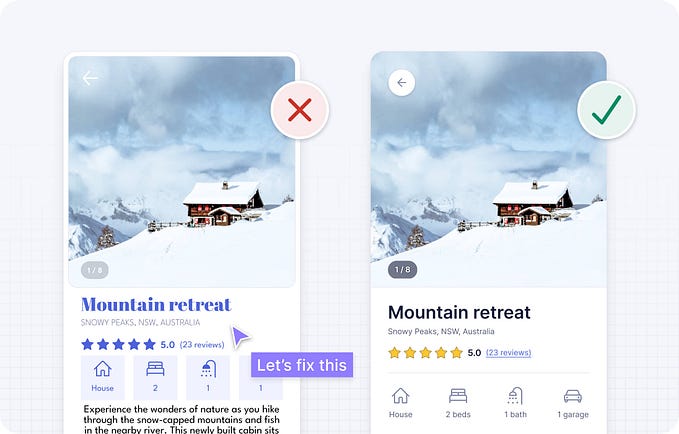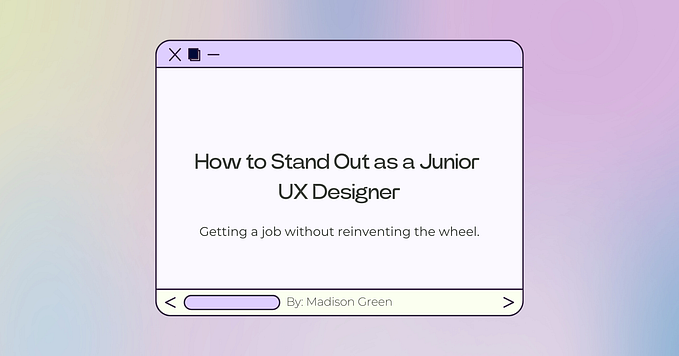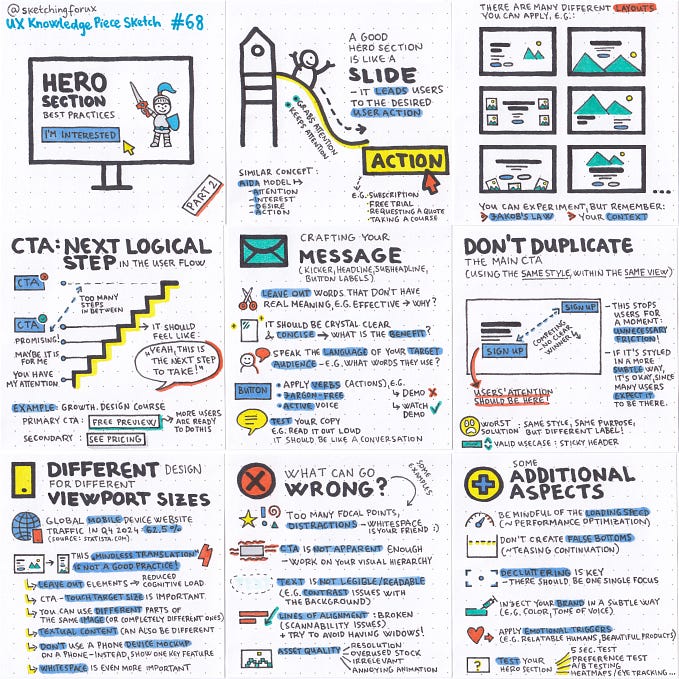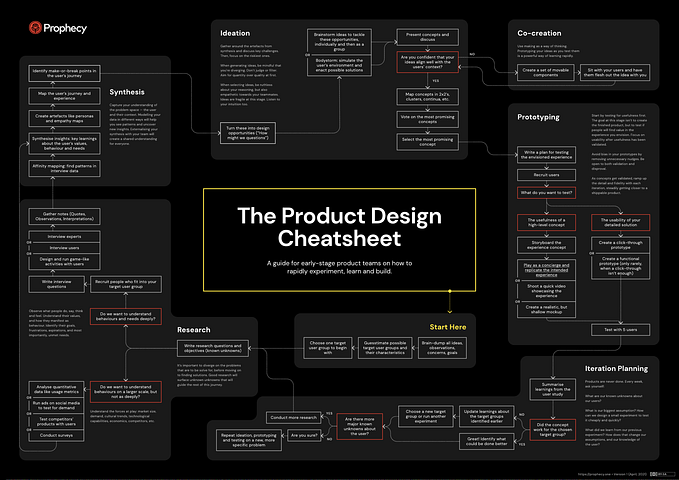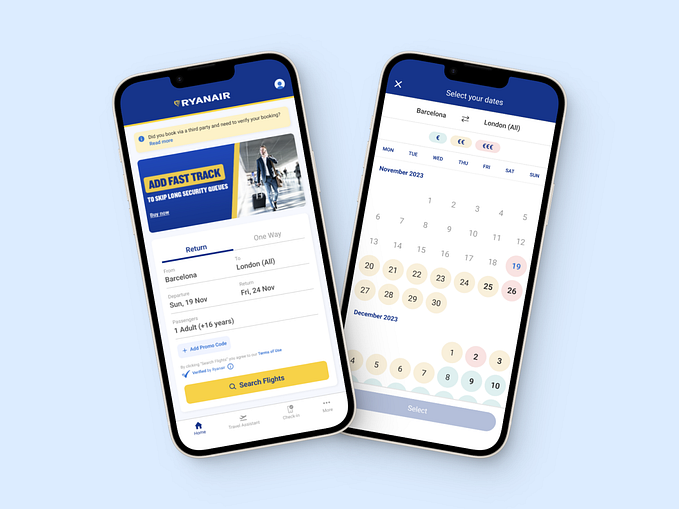Your Path to a Successful Product with UX Design Methodology: the Value Pyramid

Want to know how to boost demand and generate an ultimate market advantage to transform your business into a powerful “race car”? In a series of articles, I will guide you through the three fundamental mechanisms that are the foundation of my company's unique Financial Design Methodology. My team has used it to create 60+ successful financial services, so I have several tips and tricks for you to implement right away. I will begin by explaining the Product Value Pyramid.
post by Alex Kreger, financial UX Strategist/Founder of UX Design Agency
We have all heard of products that offer several features but still do not retain their share of the market. At the same time there are the “fortunate ones,” who seem to do nothing but have incredible demand anyway. Why is it? What does it depend on, and how do we use it purposefully?
I recall going on Craiglist 10 years ago and being shocked. How can millions of individuals demand a service with such a primitive design in the late 2000s? I had a fresh iPhone3 G, and there were many lovely and convenient internet services I had used. I wondered… didn’t they realize that in a few years all their users would go to more advanced and convenient competitors?
Yet, here I am today with an iPhoneX in my hands, and Craiglist is still popular, with very few advancements since its inception! How is this possible?

Analyzing multiple similar cases, I may have found an answer to this question that could allow to better understand the development of products in general… and financial services in particular. It should help identify the conditions under which some financial services are still in demand despite their outdated design and uncomfortable service, while others are on the verge of disappearing even despite offering a wide variety of features.
Product Value Pyramid
Most people are familiar with the Maslow Pyramid. This hierarchy theory states that human needs and motives are developing stage by stage, and humans aren’t interested in achieving the next level before completing the previous one.

As for the market, I think you will agree that competition is the main force behind stimulating the development of the product value proposition. The greater the competition, the more the manufacturers are trying to meet the needs of people and gain a competitive advantage. This means we can draw a parallel with Maslow’s pyramid and assume that, as competition grows, manufacturers will propel their products to higher and higher levels of human needs.
Thus, with each level of the pyramid, the value proposition of the product will become more and more humane. After all, in a highly competitive environment, products must increasingly match human nature to grow in popularity. At the same time, the market will become more and more fragmented, and the product niches will become narrower.
This is what we see in the banking market, in which new technologies have led to the emergence of many alternative services like Fintech. Incomers are often more convenient and better serve the specific needs of individual user groups.
So, if we take the pyramid of needs as a basis, we can extract levels of the Product Value Pyramid as follows:
1. Physiological Needs─Functional Value
Physiological Needs correspond to the Functional Value of the product. It’s all about providing the desired result to the client by using the product features.
2. Need for Security─Usability Value
The Need for Security is associated with the comfort of the person, so here we can talk about Usability Value of the product. Ease of use satisfies the need for control and ultimately creates a sense of security and confidence in the product.
3. Love and belonging─Aesthetics Value
Love and a sense of belonging are emotions. A product can influence emotions through Aesthetics. Aesthetics allows us to enjoy things, service, relations and life in general. We are attracted to beautiful things; we value them and like to possess them.
4. Need for Respect─Status Value
The Need for Respect can be satisfied with the help of the clear Status Value of the product or, rather, its compliance with a certain lifestyle.
5. Need for Self-actualization─Mission Value
The need for Self-actualization is the human desire to maximize the realization of his/her capabilities. Here, a product or service can inspire self-realization by offering to join an exciting large-scale Mission that brings value to the world.

How it works
Imagine that you have invented a product that provides a solution demanded by customers. All you would have to do is make it work properly and just enjoy your stable business and endless profit.
But, what if competitors copy the technology and start producing a similar product or service? Then you need to offer something unique that provides an advantage to your product and additional benefits to your customers. Simple functionality is no longer enough because everyone has it; you need to figure out additional value.
This is the moment when the competition takes an entrepreneur to the next level of the Product Value Pyramid. If functionality is not enough to compete, provide usability. If all the competitors have the same functionality and usability, add aesthetics. Or, if you need even more advantages, connect the product with the customer’s lifestyle by personalizing it; make it a symbol of his/her status. And, finally, you can go even further and state the mission to deliver ultimate value that will change the world.
As you can see, it is similar to the Maslow pyramid, but, instead of needs satisfaction, the main power to drive change is competition. If there’s not enough competition and demand, the product would very likely be stuck in the functional stage. If you miss out on the market development stage and are stuck in one of the previous phases, the demand will most certainly decrease. For example, in a market in which most products are not just similar in functionality, but also quite convenient, customers don’t need something more functional but unusable. Of course, price cuts can temporarily help until competitors offer more convenience for a similar price.
It should be kept in mind that the actualization of needs at the upper levels of the Maslow pyramid occurs only when the lower ones are satisfied. A person is unlikely to be concerned about the manifestation of love or the strengthening of his status if he is very hungry, or his safety is under threat. Also, a product offering top-level value in an unripe market may not find enough demand.
For example, if we go back in time when the main vehicle was a horse, most people couldn’t even grasp the advantages of the invention of the first car, not to mention being able to appreciate cars that are more comfortable and beautiful. That’s because it was completely irrelevant to them at that time. This clearly demonstrates that demand at the next value level of the market is formed as the demand in the previous level is satisfied.
Targeting the unique Product Value proposition at the top four levels (mission, status, aesthetics and usability) of the pyramid will help to maximize the needs of users through customer-centered product design. Therefore, when we ask what our user feels, how comfortable he/she is and whether the product solves their problem and fits their lifestyle, we are designing the user experience.
Level by level
Let’s find out exactly how the growth of demand and competition forms the uniqueness of the product at each stage of the Product Value Pyramid. We will test this model on one of the most developed industries─automotive.
You might ask: why cars if we work with finance? To hand over the model of the Product Value Pyramid as effectively as possible, I decided to look at it from a third-party industry. This way, it will be much more clear and easy to understand as this is your first encounter with this concept. After getting a taste of it, I will demonstrate how it applies to the banking industry.
For an additional explanation of the model, I will use the innovation adoption lifecycle that clearly illustrates the dependence of demand on the adaptation of a new product in society.

1st stage: Functionality
At the stage of market emergence, key decision-making criteria for buyers is determined by functionality. Functionality is used as the main unique feature of the product if it’s among the first in the market. However, its disadvantages may outweigh the pros.
New technology may be inconvenient to use and may not be visually attractive. But, a certain category of buyers is ready to close their eyes to this and pay for the novelty. These are innovators, an average of 2.5% in any market, who want to be the first to try new solutions. At this stage, solutions that offer novelty through functionality typically enjoy the greatest demand.

An example from the auto industry
The first buyers of cars were not familiar with the product, so they were interested only in its functional aspects: how to use it and how far and fast the auto could go compared to a horse. It was important to make the technology stable and raise the interest of the customers. So, the manufacturers weren’t focusing on the convenience or aesthetics of their cars.
Therefore, the first cars didn’t even have a roof and resembled a carriage without a horse. They were extremely inconvenient in driving control, and passengers even had to use special glasses and clothes. Nevertheless, for the buyer audience of innovators, this was enough, and they were eager to exchange the reliability of horses for the first unreliable machines.

What does this mean for banking?
We can see similar processes in the financial industry. Despite several hundred years of history, the digital age has made the traditional players learn how to survive in the new digital service market. As a result, the financial industry is experiencing a total renewal and, at some point, began its ascent along the Product Value Pyramid from the bottom level.
The undermining of the industry by advanced digital technologies essentially translated banking services from the services category to the product category. Now, users aren’t requesting a list of services at a bank branch but, rather, enter an online product or download a mobile application. This allowed banks to begin a wider expansion of their services using the internet to deliver their products beyond its local market, dramatically increasing the competition.
If we look at the development of digital banking, we see that most banks have already provided their customers with basic functionality. In particular, billions of users check their balance or transfer money using mobile banking. The technical level of digital banking solutions is very stable. Functional innovations at this stage become less common and do not provide a key competitive advantage demanded by users.
The active implementation of digital technologies has led to the disruption of the market monopoly of banks. Creating and launching a digital financial product has become relatively easy, and thousands of Fintech start-ups have poured into the industry. This started a transition to the next Product Value Pyramid stage with the emergence of convenient solutions, and not just functional, on the market.

Here, the banks using vendor solutions have a slight hitch. The speed of development of the B2B vendor solutions market is lower than the B2C mass banking market. The competition in the vendor market is quite low, since the development of a white label banking solution requires a large amount of time and resources. Therefore, most vendors are focused on providing banks with stable and secure high-quality functionality, especially when it comes to niche modules that basically have no competitors. But, this functionality is not enough for the end users of banks, as the market for client solutions has moved to the next stage and has shaped higher expectations.
This analysis is confirmed by the fact that the active use of user experience design (UX) began five to seven years ago among FinTech startups. Banks, in turn, have only recently begun an active introduction of UX, customer experience (CX) and Design Thinking. As for the vendors, many of them still sell solutions that are difficult to use and are visually outdated, relying on its functionality as an advantage. Banks are forced to buy them despite the dissatisfaction of their users, since the vendors’ market does not offer alternatives. Therefore, some banks are forced to develop their own solutions or to customize the vendor’s solution, increasing its convenience and attractiveness to their users.
Nevertheless, over the past few years, competition among vendors has begun to increase, and, in order to gain a place in the market, novices offer not just functional but convenient solutions. This becomes their real competitive advantage over traditional players. Time will tell whether traditional players will be able to upgrade their products to meet the market’s needs.
2nd stage: Usability
When innovators tried out a new product and appreciated its advantages, they began to praise it, which stimulated the interest of early adopters, adding another 13.5% to the market. Demand began to grow, the production technology of a product or the provision of a service stabilized, and the market became interesting to competitors.
At this stage, functionality loses its key advantage. The technology is steadily reproduced, and more and more alternatives appear on the market. In the struggle for customers, manufacturers are beginning to think more and more about the convenience of their products or services. Expectations of customers are increasing, and they are no longer willing to put up with product issues.

An example from the auto industry
So, the growth in demand leads to a new round of the competition. Competitors have focused on the convenience of cars. They began to offer cars that were easier to use, offering closed, soundproof cabs and wheel shock absorbers. This resulted in a significant increase in the demand for cars. And, manufacturers still didn’t have to worry about aesthetics. As Henry Ford announced in 1909: “Any customer can have a car painted any color that he wants so long as it is black.”

What does this mean for banking?
More convenient digital services have raised the banking experience and user expectations to a new level. Consumers have felt that online and mobile banking should be convenient and pleasant to use. Thus, innovations in digital banking have moved from the Functionality stage to the Usability stage.
It is not enough to simply provide the ability to create an account online. It needs to be done faster, more easily and be more clear than its competitors. Instead of just providing the opportunity to transfer money using a mobile phone by filling out a long detailed form, they must offer the recipient the ability to quickly select a contact from the phone book and send money instantly.
I believe the perception of the majority of consumers of the banking market passed or is close to completing this stage. Because, for the majority of users, usability has become an indispensable element and not a special advantage of the product. It means we should look for the advantages that may surprise users at a higher stage of the Value pyramid.
Unfortunately, not all financial companies have revised their products and service development approach. Many of them are still confident that it is enough just to provide customers with the necessary functionality. And, they are sincerely surprised when customers switch to competitors complaining about a bad attitude, inconvenient service and overly complex products.
To be continued…
There are three important stages remaining:
- Aesthetics that come in at the moment when the customers are looking for something more than just convenience and functionality;
- Status that’s covering product variations personalized according to clients’ capabilities, preferences and status;
- Mission─the most important one and highest level of the Product Value Pyramid, an innovative vision that can transform the whole market.
As these are extra competitive advantages to make your financial product a true “game changer,” I will cover those in a separate article next week. Until then, I encourage you to observe and discuss in your organization the insights provided in this article. Feel free to share what you felt were the most useful in the comments section or in a private message.
This was an excerpt. You can read the full article, with more ready-to-implement tips and tricks that would accelerate the success of your product in UXDA blog.




